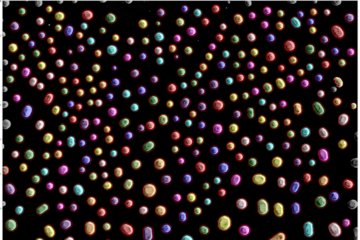All genres
261.
Talk
Atomic Scale Characterization of Complex Materials. Physikalisches Kolloquium, Fakultät für Mathematik und Physik, Universität Freiburg, Freiburg, Ger,amy (2017)
262.
Talk
Interfaces and defect composition at the near-atomic scale. MRS Fall Meeting 2017, Boston, MA, USA (2017)
263.
Talk
Relationship between Impact Toughness, Prior Austenite Grain Boundaries and Microstructural Morphology in Medium Mn Steel. TMS 2017 Annual Meeting & Exhibition, San Diego, CA, USA (2017)
264.
Talk
Segregation Engineering in Medium Manganese Steels. TMS2017 Annual Meeting & Exhibition, San Diego, CA, USA (2017)
265.
Talk
Austenite Formation along Dislocations in Medium Manganese Steels. TMS 2017 Annual Meeting & Exhibition, San Diego, CA, USA (2017)
266.
Talk
Hydrogen-assisted Failure in Ni-base Superalloy 718 Studied under In-situ Hydrogen Charging: The Role of Localized Deformation in Crack Propagation. TMS 2017 Annual Meeting & Exhibition, San Diego, CA, USA (2017)
267.
Talk
Segregation and Austenite Reversion at Dislocations in a Binary Fe–9%Mn Steel Studied by Correlative TEM-atom Probe Tomography. The 3rd International Conference on High Manganese Steels, Chengdu, China (2016)
268.
Talk
Austenite Reversion in Medium Manganese Steels. The 3rd International Conference on High Manganese Steels, Chengdu, China (2016)
269.
Talk
Ab-Initio Guided Design of Twinning Induced Plasticity and Weight Reduced Austenitic Steels. MRS Fall Meeting, Boston, MA, USA (2016)
270.
Talk
Segregation Engineering - Solute Decoration, Complexions and Transformations for Self-Organized Metallurgical Bulk Nanostructures. MRS Fall Meeting, Boston, MA, USA (2016)
271.
Talk
Multi-probe tracking of nano-scale tempering reactions in low-carbon lath martensite. 9th Pacific Rim International Conference on Advanced Materials and Processing (PRICM 9 ), Kyoto, Japan (2016)
272.
Talk
New multi-probe experimental approaches to study complex lath martensite. Seminar at Department of Mechanical Engineering, Kyushu University, Fukuoka, Japan (2016)
273.
Talk
Atoms, ions, electrons: simulated, measured and manipulated. Workshop on Scientific Directions for Future Transmission Electron Microscopy, Jülich, Germany (2016)
274.
Talk
Chemo-Mechanics at Lattice Defects: from Mechanisms to Bulk Alloys. Gordon Research Conference on Thin Film & Small Scale Mechanical Behavior, Lewiston, ME, USA (2016)
275.
Talk
Defect Segregation studied by Correlative Atom Probe Tomography and Electron Microscopy. Japan-Germany Joint Symposium on Advanced Characterization of Nanostructured Materials for Energy and Environment, Conference Center Mutterhaus, Düsseldorf, Germany (2016)
276.
Talk
Integrated experimental and simulation analysis of lattice defects and micromechanics in steels. Materials Modeling Colloquium, Universität Stuttgart, Stuttgart, Germany (2016)
277.
Talk
Segregation engineering for self-organized nanostructuring of materials - from atoms to properties? APT&M 2016 - Atom Probe Tomography & Microscopy 2016 (55th IFES) , Gyeongju, South Korea (2016)
278.
Talk
From grains to atoms: ping-pong between experiment and simulation for understanding microstructure mechanisms. Res Metallica Symposium, Department of Materials Engineering, KU Leuven, Leuven, The Netherlands (2016)
279.
Talk
Integrated experimental and simulation analysis of dual phase steels. Workshop on Possibilities and Limitations of Quantitative Materials Modeling and Characterization 2016, Bernkastel, Germany (2016)
280.
Talk
Segregation engineering in medium manganese steels. Workshop Integrated Computational Grain Boundary Engineering: The role of segregation, Graz, Austria (2016)










